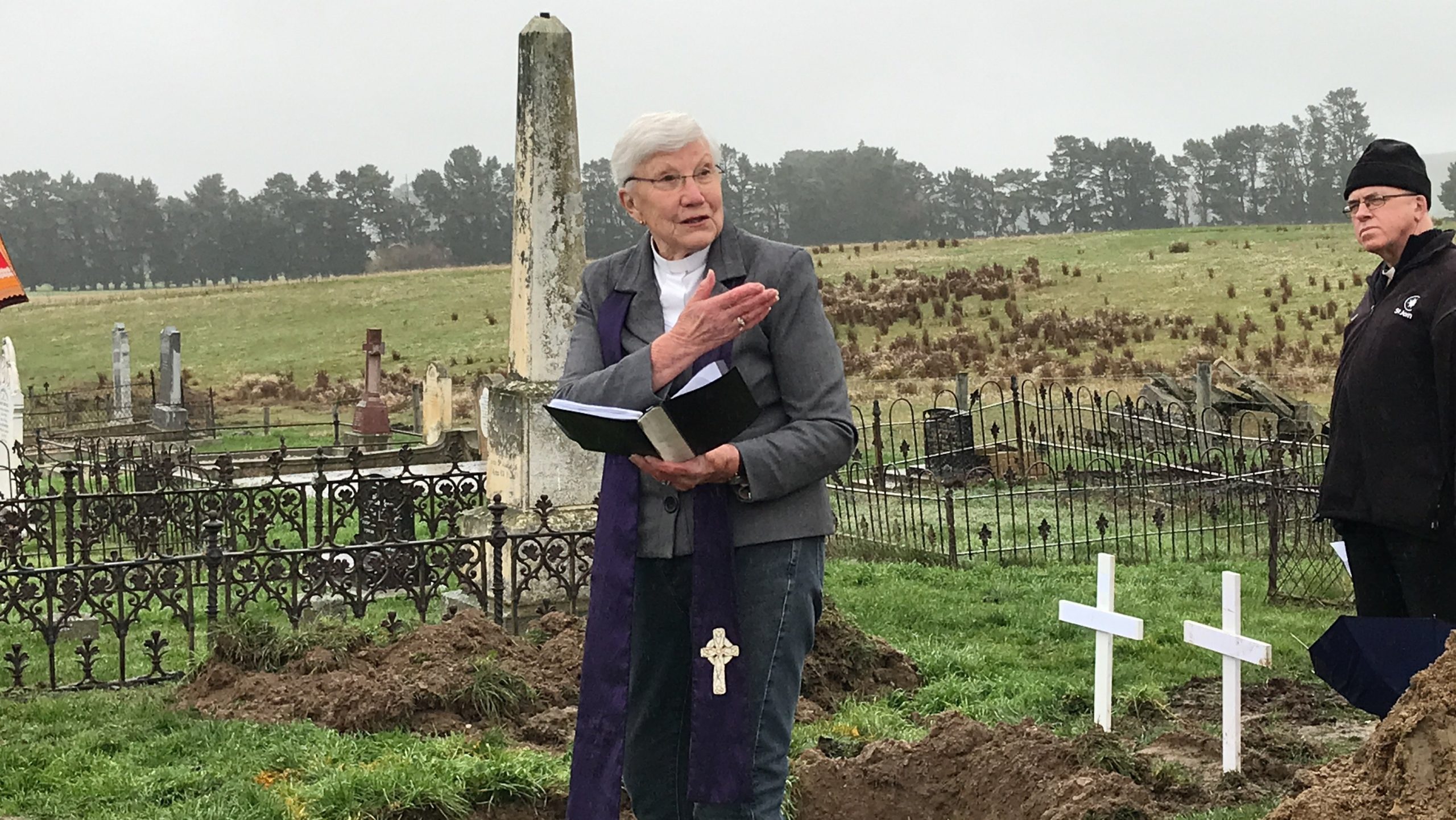The remains of 12 early European and Chinese settlers were reinterred in Drybread Cemetery, Central Otago, on Saturday , marking an important final step for the Southern Cemeteries Archaeological Project.
Since 2016, a team of archaeologists led by Dr Peter Petchey and Prof Hallie Buckley has been working with communities in Milton, Lawrence and Omakau, and the New Zealand Chinese community, to learn more about the people buried in unmarked graves and create a detailed picture of what life was like for them before they died in the late 1800s.
About 40 people attended the Christian and Buddhist ceremony at Drybread Cemetery on Saturday for the people whose remains were discovered two years ago and disinterred.
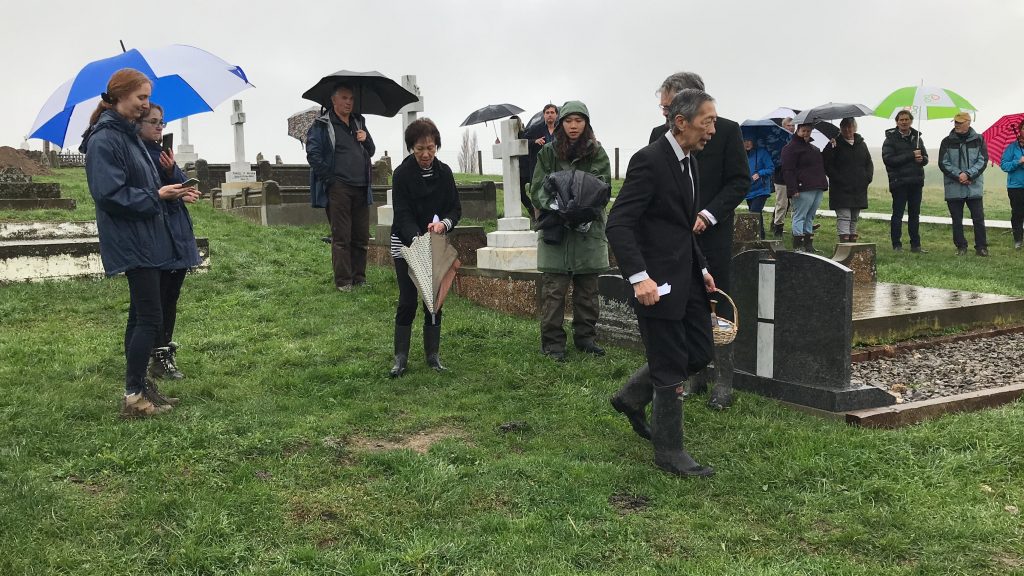
Dr Petchey, director of Southern Archaeology, and Prof Buckley, of University of Otago’s department of anatomy, co-directed the work, part of a bigger project that began in 2016 and also involved cemeteries in Lawrence and Milton.
Drybread was a gold rush-era settlement in the Manuherikia Valley, set up in 1863 as a diggers’ camp.
The cemetery is still being used by the community and is run by a local trust.
But many original records had been lost and there was ongoing uncertainty about unknown burials. Dr Petchey said the project had helped answer some of those questions.
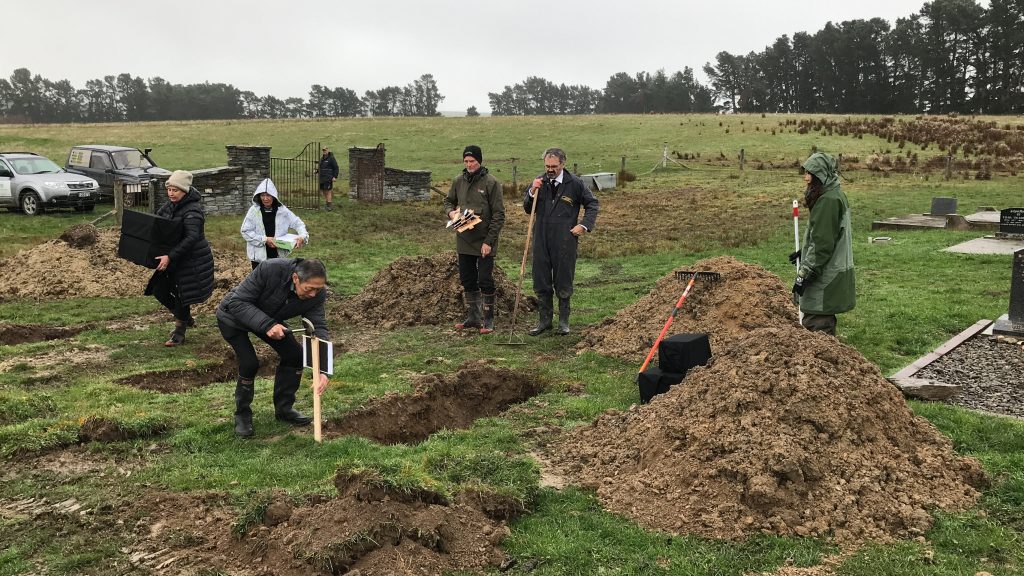
‘‘Today we’ve been reburying the individuals we exhumed two years ago, during the archaeology excavation.
‘‘We’ve examined the bones and the clothes and the coffins and so on and today has been the reburial for those European and Chinese people.’’
Prof Buckley said the experience had been rewarding for the project team.
‘‘Today rounds off the whole project that we have been engaged in since 2016, working at these old cemeteries of Otago to find the lost graves of European and Chinese settlers.
‘‘It marks the end of the project overall in terms of archaeology,’’ she said.
Work would continue for some time yet as the researchers turned their focus to writing up their findings.
Cemetery trustee and sexton Karen Glassford said there was also plenty of work ahead for the trust to follow up and amend historical burial records.
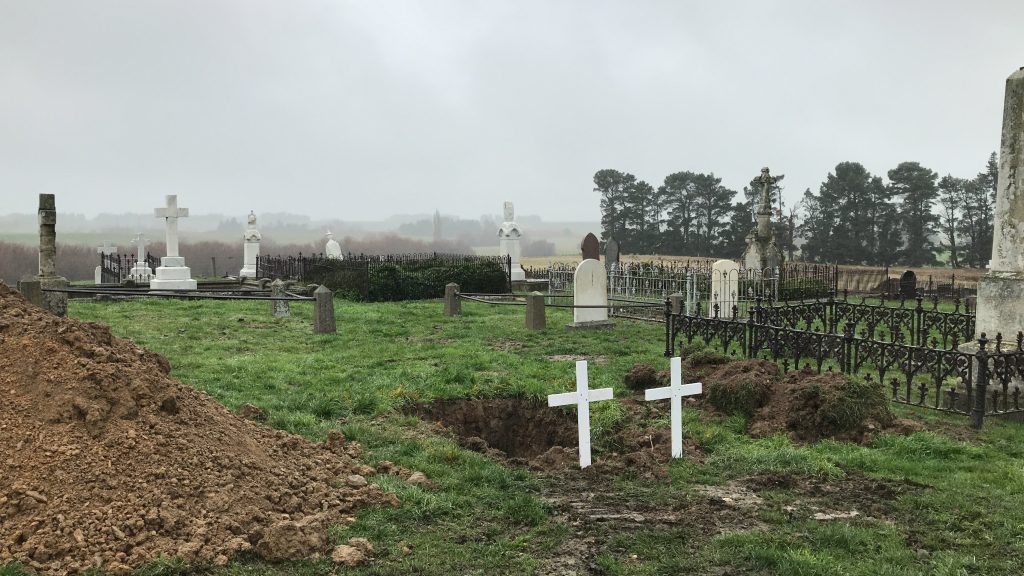
Twelve unmarked graves were identified at Drybread during the study, along with 27 in Milton and 34 in Lawrence.
At Drybread, the researchers studied bones, hair, clothing and other remains of six European graves and six Chinese graves.
One unnamed European woman had injured her arm sometime before her death, suffered from diseases including rickets and enjoyed smoking a pipe, but they did not discover her name.
She had been lovingly prepared for burial with a beautiful plaited hairdo, looping around her ears, Prof Buckley said.
One of the Chinese men, Ah Won, died in 1895.
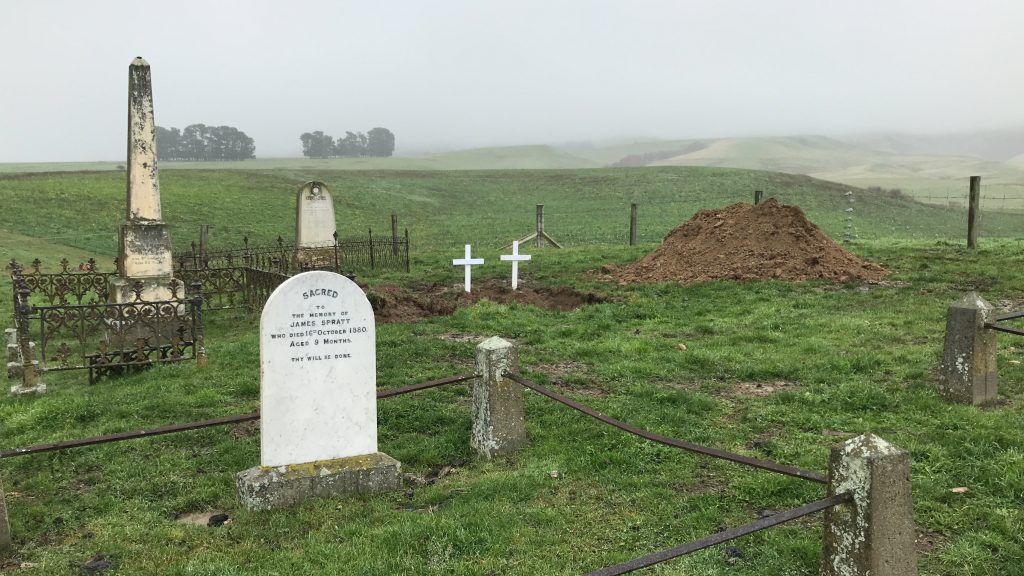
He wore his hair long down his back and — judging by his tailored burial suit that fitted an injured arm — was more affluent than some of the others.
Historian Les Wong, of Dunedin, said Ah was not a real name. It was a nickname, a word Europeans would recognise as the hesitant expression ‘‘um’’.
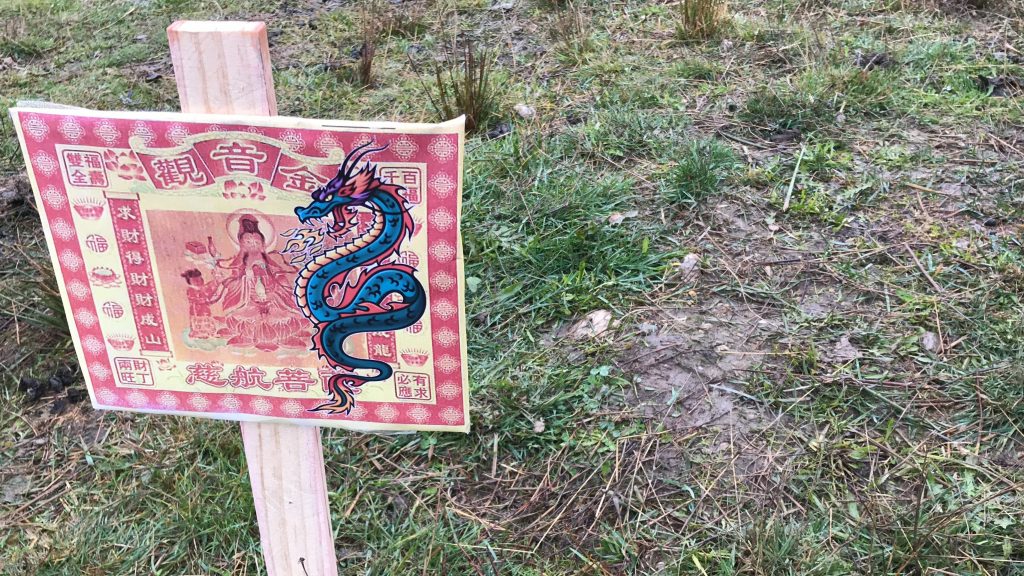
‘‘They are real people. They lived and walked around that land. That’s why we have to respect them,’’ Mr Wong said.
Prof Buckley said it was important to restore dignity to the people — known and unknown.
Before each person’s reburial, she explained what the researchers had found out about them.
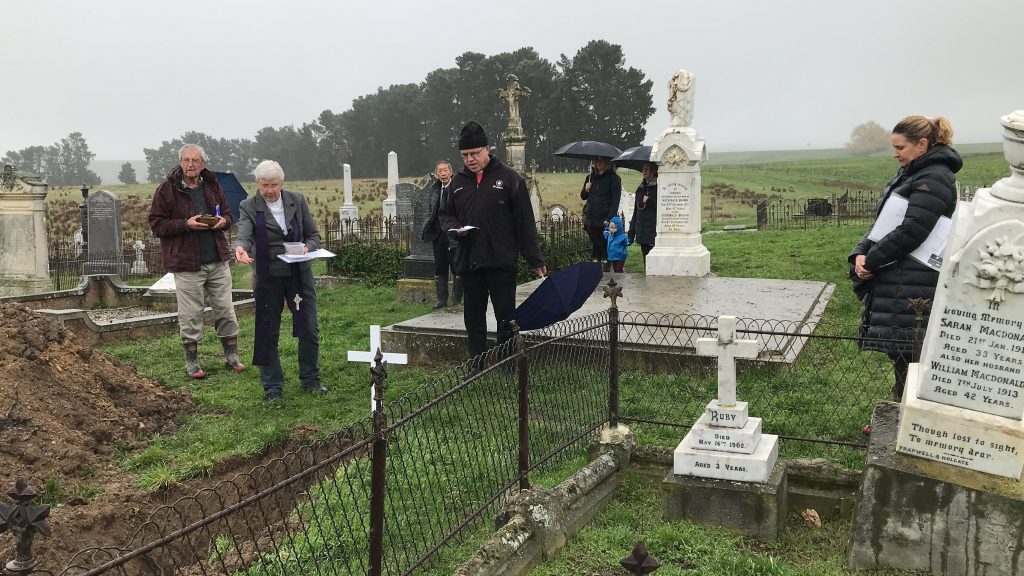
Anglican minister the Rev Penny Sinnamon, of Omakau, led the Christian burial services for the Europeans, assisted by the Dunstan Parish vicar, the Rev Craig Smith.
‘‘A welcoming place has been made for these people whom we want to honour . . . We are burying their earthly remains but the spirit or their life force or their soul or whatever you want to call it can never be contained in these boxes . . . These people, we have heard a wee bit about how they looked like . . .but it is this something inside us that makes us who we are, our spirit, our life force — and today we want to honour these lives with respect and recognition,’’ she said.
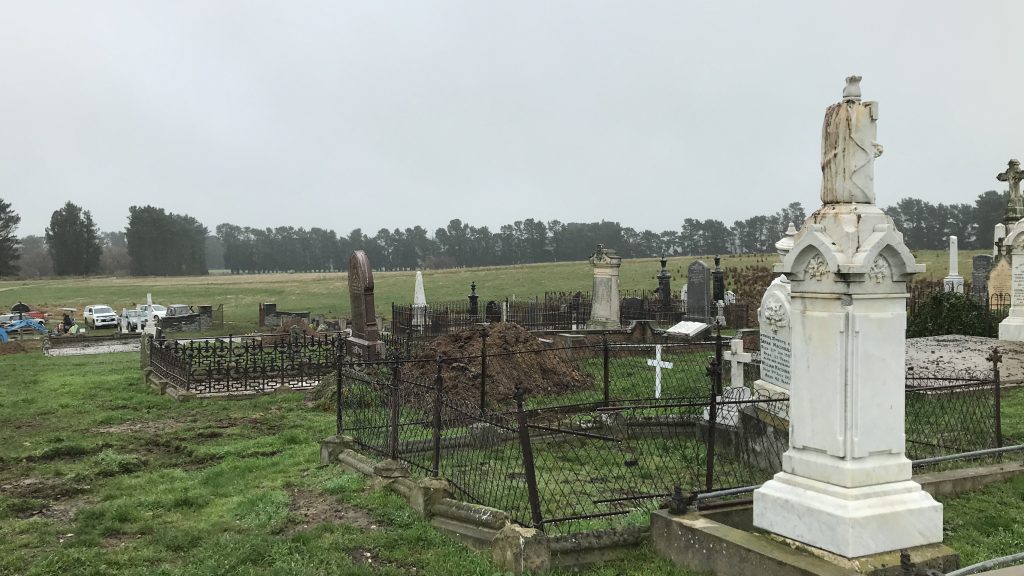
Mr Wong and his wife Maisie led a Buddhist funeral, explaining the funeral envelopes filled with sweets, coins and tissues signified sweet memories, repaid perceived debts or travel costs, and wiped away tears of sadness.
They scattered petals and rice over the graves and poured liquor on the ground to honour protective spirits.
‘‘We have learned more from them than if we had read it in books,’’ Mr Wong said.

